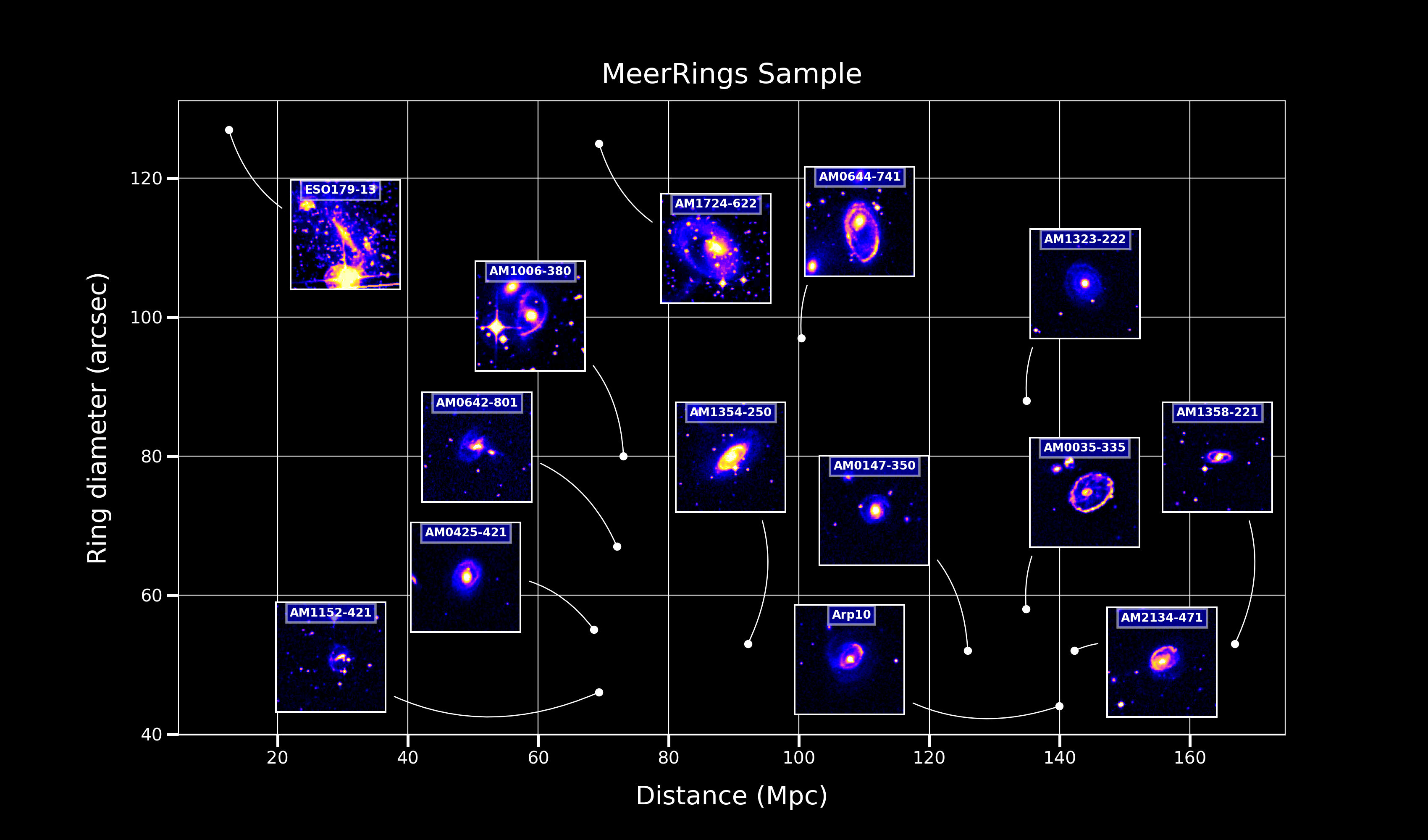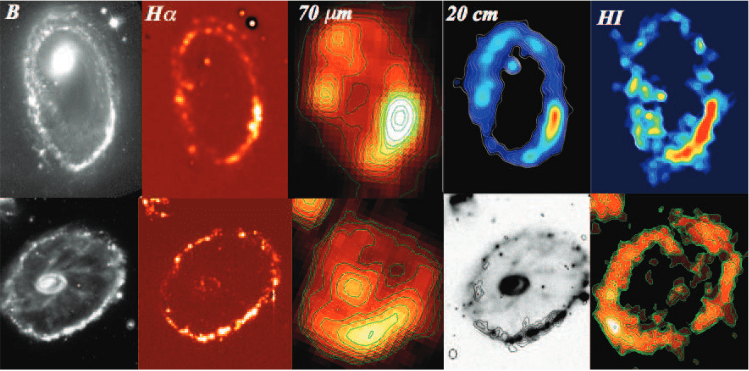Collisional Ring Galaxies (CRGs) are an intriguing class of galaxies that are the results of the passage of an intruder galaxy through the disc of a target galaxy. Star formation in CRGs has been explored previously but the neutral gas has been studied only in a small subset of these rare sources. The header image is a recent JWST observation of the cartwheel CRG.

Plot showing the diameter and distance distribution of the full MeerRings sample. The DSS2 false-color images of the CRGs are annotated.
Science Goals
-
Census & environment: for the first time perform a deep HI census of a considerable sample of CRGs and their environments. Are all CRGs HI rich? What fraction of neutral gas do we see in the tails, inner regions, and outer regions? Does the HI (and anomalous gas) distribution in the ring match with the distribution of the massive star clusters? Is there a correlation between SFR and MHI? Do CRGs reside in similar environment densities?
-
Gas Kinematics: perform tilted ring modeling to study the effects induced by the interaction on the CRG’s gas disc such as warps, non-circular motions, vertical structures etc. We will employ either 3DBarolo or TiRiFiC depending on the resolution and the complexity of the observed emission. Do we see similar radial, vertical, and circular kinematics in all CRGs?
-
Anomalous gas: characterize the anomalous gas resulting from the interaction using physically motivated Gaussian decomposition and kinematic tagging. Where resolution permits (∼ 55% of the sample), we will also attempt to extract the Extra-Planar Gas (EPG) of the CRG. In all CRGs, we expect to find splash features and thus this will be the first homogeneously characterized sample of splash features resulting from a well-known interaction.
-
Evolution: investigate whether the CRGs follow established scaling relations and whether stability or angular momentum correlates with time since the collision and or intruder distance. By exploiting our sample that spans a range of ’time since collision’, we hope to study the evolution of the CRGs.
-
Continuum and Polarisation: the $\sim 5 \mu$ Jy beam$^{-1}$ continuum sensitivity of MeerKAT will allow us to examine asymmetries in the continuum images, infer insights about massive SF, search for decaying electron populations behind the rings, search for polarisation signatures, and investigate the properties of the non-thermal radio halo to study cosmic ray propagation.
 |
|---|
| Figure taken from Higdon & Higdon (2010) showing a polychromatic view of two ring galaxies: (top) the Lindsay-Shapely ring galaxy and (bottom) the Cartwheel. The fifth column shows the HI to be confined to the rings, with low-density gas filling the interior (Higdon 1996; Higdon et al. 2011). There is a clear asymmetry in the HI which can be explored better with sensitive observations of the extended disc. |
Team
- Sriram Sankar (PI/Technical lead), SAAO/UCT, South Africa
- Moses Mogotsi, SAAO/SALT, South Africa
- Chandra Murugeshan, CSIRO, Australia
- Curtis Struck, Iowa State University, United States
- D J Pisano, UCT, South Africa
- Florent Renaud, CNRS / Strasbourg Observatory, France
- Ivy Wong, CSIRO, Australia
- Lennart Heino, UCT/iDiA, South Africa
- Srikrishna Sekhar, NRAO, USA
- Matthew Bershady, UW-Madison, United States
- Petri Vaisanen, SAAO, South Africa
- Sabyasachi Chattopadhyay, SAAO/SALT
- Zara Randriamanakoto, SAAO, South Africa